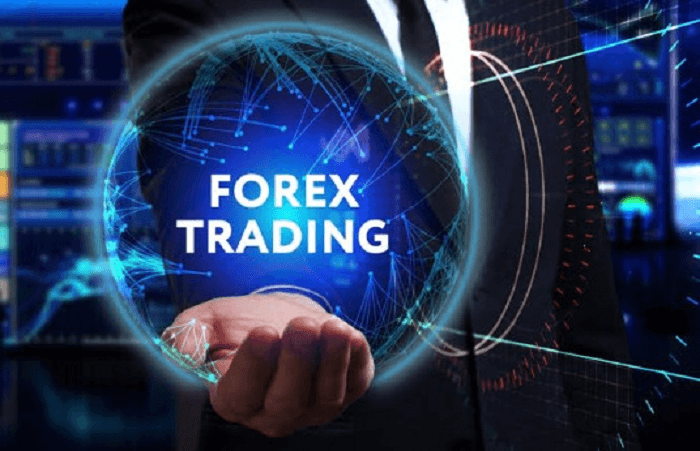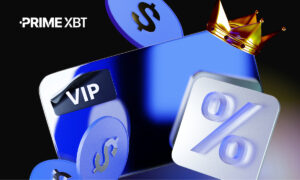Foreign exchange (FX) trading, offered by platforms like oiltraderai.com, involves the buying and selling of different currencies to capitalize on their value fluctuations. Our website provides a range of FX trading services and products, such as access to spot, forwards, futures, options, currency swaps, and more. Additionally, we offer educational resources and support to assist traders in enhancing their skills and making well-informed decisions in the market. With oiltraderai.com, traders can access comprehensive tools and information to navigate the FX trading landscape effectively.
Understanding FX Trading
FX trading, also known as foreign exchange trading, involves the buying and selling of global currencies. It is one of the largest and most liquid financial markets in the world, with an average daily trading volume of more than $5 trillion. FX trading can be used for a variety of purposes, including transactional needs, investment diversification, and speculation.
For instance, imagine that you are a US-based importer who regularly buys goods from a European manufacturer. You might use FX trading to convert your dollars into euros to pay for these imports. Alternatively, consider an investor who wants to diversify their portfolio by investing in foreign assets. That investor may purchase a foreign currency with the expectation that its value will increase over time.
Despite its potential benefits, FX trading is not without risk. Currency values fluctuate frequently and can be impacted by a wide range of factors such as economic reports, geopolitical events, and interest rate changes. As a result, it’s important for those interested in FX trading to have a solid understanding of the market and the tools necessary to manage risk.
In the following section, we’ll discuss some key concepts and terminology that are critical for understanding FX trading.
Key Concepts and Terminology
Currencies trade against each other in pairs. For example, if someone buys the EUR/USD currency pair, they are buying euros while simultaneously selling US dollars. One currency in the pair is always considered “base” (e.g., EUR) while the other is deemed “counter” (e.g., USD). The exchange rate represents how much of the counter currency is needed to buy one unit of the base currency.
A currency’s value depends on numerous macreconomic factors such as political stability, inflation rates or central bank decisions. Traders typically use technical and fundamental analysis to evaluate these factors alongside current and historical market trends. Technical analysis focuses on charts and indicators to detect patterns while fundamental analysis evaluates economic reports, market sentiment, and the actions of central banks.
Specific terms commonly used in FX trading include pips (short for “percentage in points”), which reflects the smallest possible price change in an exchange rate. Another important term is swap, or the interest rate differential between two currencies. Swaps can be positive or negative, depending on the direction of trade and the interest rate differential.
While many traders are focused on short-term gains, it’s also important to consider the long-term factors that could affect currency values. Some traders prefer to monitor geopolitical developments such as trade agreements or major elections that could have a significant impact on currency values over time. Others focus on policy changes of central banks that announce interest rate decisions or monetary easing programmes.
Now that we’ve covered some key concepts and terminology, let’s move on to exploring various strategies for successful FX trading.
Currency Pairs and Exchange Rates
Understanding currency pairs and exchange rates is essential for FX Trading. All currencies have a three-letter code that represents them, and the most traded currencies in the world are the US dollar, euro, yen, British pound, Swiss franc, Canadian dollar, Australian dollar, and New Zealand dollar. Currencies trade against each other as exchange rate pairs. The exchange rate indicates how much of one currency is needed to buy another.
For example, let’s say the EUR/USD pair is trading at 1.2000. This means that one euro can be exchanged for 1.2000 US dollars or that it takes 1.2000 US dollars to buy one euro. The first currency in the pair is called the base currency, while the second is called the quote or counter currency. In this case, the euro is the base currency, and the US dollar is the quote currency.
To better understand exchange rates, let’s say you are planning a trip to Europe from the United States. You need euros to pay for your expenses while you are there. At the time of your trip planning stage, let’s assume that 1 EUR = 1.20 USD. So if you wanted to exchange $1000 USD into euros at that time rate of 1 EUR = 1.20 USD, you would receive €833.33 (1000 / 1.20). Suppose you went on your trip a month later and found out that 1 EUR now equals 1.25 USD. In that case, if you exchanged $1000 USD then you would receive €800 (1000 / 1.25), which means you would lose some money due to an unfavourable exchange rate.
Exchange rates are influenced by various factors such as geopolitical events, monetary policies by central banks, and economic indicators such as inflation, trade balances, and GDP growth rates. Therefore, it is crucial to keep up with the latest financial news and events that might affect exchange rates if you want to trade Forex confidently.
Understanding how currency pairs and exchange rates work is a fundamental concept of FX Trading. Now that we have covered this topic, let’s move on to explore strategies used for FX Trading.
- According to a 2022 triennial report from the Bank for International Settlements (BIS), the daily global volume for forex trading reached $7.5 trillion in 2022, making it the largest and most liquid financial market in the world.
- The foreign exchange market operates 24 hours a day, five days a week, with three main trading sessions: the Asian session, the European session, and the North American session. This continuous operation contributes to its massive trading volume.
- Approximately 88% of all foreign exchange transactions involve major currency pairs such as EUR/USD, USD/JPY, GBP/USD, and USD/CHF, according to data from the BIS. These currency pairs are considered highly liquid due to the significant trading activity surrounding them.
Strategies for FX Trading
To trade currencies successfully, you need to have a trading strategy that suits your personality and risk tolerance level. There are two main types of trading strategies: technical analysis and fundamental analysis.
Technical analysis focuses on studying past price data to identify patterns and trends that can help predict future price movements. Traders use various technical tools such as charts, indicators, and oscillators to analyse market trends and make informed trading decisions.
On the other hand, fundamental analysis focuses on analysing economic and financial data such as interest rates, inflation rates, GDP growth rates, global events, and macroeconomic policies. Fundamental analysts look at how these factors influence the supply and demand of currencies in the market and make decisions based on their findings.
Some traders prefer using both technical and fundamental analyses to complement each other. They believe a combination of both analytical methods gives them a better understanding of the market conditions. Other traders argue that relying solely on one type of analysis can provide equally effective results.
Whichever strategy a trader employs when trading forex markets, it’s essential always to include risk management techniques into their approach. Risk management tools commonly involve setting stop orders or profit-taking orders when trades hit a predetermined stop-loss limit or profit thresholds.
The key takeaway here is that there are various strategies for FX Trading that traders can choose from depending on their preference and goals. Nonetheless, whichever strategy they opt for when trading forex markets should consider their risk management adequately. Now, that we’ve covered the strategies, the next section will look at factors to consider when selecting an FX trading platform.
Technical and Fundamental Analysis
When it comes to FX trading, there are two primary approaches traders use to analyse the markets – technical analysis and fundamental analysis. Technical analysis involves studying past price movement patterns to identify potential price changes, while fundamental analysis examines broader economic and geopolitical factors that can impact the value of a currency.
For technical analysis, traders use various tools like charts, trend lines, moving averages, and other indicators to identify patterns and make predictions about future price movements. For instance, if a trader observes that the price of a particular currency pair has consistently risen after hitting a specific support level over a certain period, they may assume that it will likely continue to do so in the future.
With fundamental analysis, traders assess different economic indicators like inflation rates, interest rates, trade balances, political events, and major news releases from different parts of the world. These aspects help them gauge how healthy an economy is and how it might influence its related currency. For example, higher-interest rates may increase demand for a currency as investors seek better returns.
Trading platforms provide various tools for conducting technical and fundamental analyses. Many platforms provide real-time pricing data for currency pairs and helpful charting tools to evaluate technical indicators. Research reports available on most online trading platforms can also be used to conduct fundamental analysis by providing regularly updated economic data on global economies.
Keep in mind that while both technical and fundamental analysis can help you predict price movements in Forex trading, no strategy offers 100% accuracy. It is essential to learn about these tools’ pros and cons before putting them into practise. Traders should also consider market sentiment – people’s collective opinion about financial markets – since it often drives price actions more than any specific economic or political event.
Moving on from analysing market trends, let us shift our attention to managing risk effectively.
Risk Management Techniques
One of the most critical aspects of trading is risk management. Risk management indicates identifying and managing potential risks and taking necessary actions to reduce losses. Successful traders understand that it’s not about how much they can earn, but how much they can lose and still keep trading effectively.
The first technique towards effective risk management requires understanding position sizing for proper Forex trade management. It would help if you never risk an excessive amount of your capital in one trade but a certain percentage to ensure that you come out profitable despite a loss.
Secondly, traders should consider placing stop-loss orders to prevent major losses when expecting adverse market movements. By setting up specific parameters for high-risk scenarios, traders can secure their investments without continuous monitoring and protect against sudden price dips.
Lastly, it’s essential to diversify your portfolio by trading multiple currency pairs rather than investing everything in one currency pair since each currency pair behaves differently under similar market conditions.
Think of risk management techniques as a seatbelt. You put the seatbelt on before driving because you are aware of potential dangers and want to protect yourself from any mishap that may occur while on the road. Similarly, you must apply the above techniques while trading Forex. Before executing trades, take steps to protect yourself from potential market risks.
While there is no perfect way to manage risk entirely, a wide range of tools is available in any conventional brokerage account that allows you to limit losses and restrict trade size. The key takeaway is having some sort of plan in place for minimising risks.
Next up – selecting an FX Trading Platform
Selecting an FX Trading Platform
Selecting a reliable FX trading platform is essential for any foreign exchange trader. The right platform should suit your goals, trading style, and budget. With so many options available, it can be challenging to select the best one. When selecting an FX trading platform, consider the following:
Ease of Use: The platform should have an intuitive interface that allows you to focus on trading instead of figuring out how to use the software. Most trading platforms offer free demo accounts that allow you to test them before committing real money.
Security: Security is crucial when selecting an FX trading platform since you will be sharing sensitive information such as bank details and identification documents. Ensure your chosen platform is registered with a financial regulator such as the Financial Conduct Authority (FCA).
Availability of Features: Trading platforms can vary greatly in terms of features and tools. Before selecting a platform, determine which features are essential for your trading style. Some platforms may offer more advanced charting capabilities, automated trading systems such as Expert Advisors (EAs), or simpler order-entry screens.
Features and Tools
A comprehensive set of features and tools distinguishes an excellent FX trading platform from a mediocre one. Below are some essential tools and features to look for when selecting an FX trading platform:
Charting Capabilities: Look for a trading platform that offers advanced charting capabilities such as multiple timeframes, technical indicators, drawing tools, and customization options.
News Feed: Most currency pairs are affected by news events such as central bank announcements or geopolitical events such as elections or trade agreements. A good trading platform should provide access to breaking news from reputable sources.
Market Analysis: Many platforms offer market analysis tools that provide insight into emerging trends, price movements and volatility. This tool can be used to gain valuable trading insights.
Automated Trading Systems: Some FX traders use automated trading systems, such as Expert Advisors (EAs), that execute trades based on pre-set rules and conditions. Platforms that offer automated trading may also allow for custom indicators or scripts to be used.
Steps to Start FX Trading
Are you ready to take the first steps into the world of foreign exchange trading? Here are some essential things to note before venturing out:
First, consider your financial resources. The best way to start is by investing small amounts that will not significantly impact your financial position. As a beginner, it’s important to understand that Forex trading is risky and volatile; therefore, applying risk-management techniques such as stop-loss orders and setting take-profit levels is crucial.
Secondly, choose a reputable Forex broker that offers a reliable trading platform with essential features such as analytical tools, charting software, and news feeds. Check the broker’s terms of service for transparency regarding commissions and other fees charged for trading.
Thirdly, begin with a demo account. Most brokers offer a free demo account that allows beginners to practise trading without risking real money. Using a demo account enables you to test out different strategies and familiarise yourself with the market before placing real trades.
Fourthly, develop a sound trading strategy and select currency pairs that align with your objectives and understanding of global markets. It’s important to conduct thorough research on economic events in different regions that might affect currency prices.
For example, if you decide to trade the GBP/USD pair (British Pound vs US Dollar), monitor news related to Brexit or changes in interest rates from either country’s central bank.
Finally, always keep learning. The forex market is dynamic and constantly changing; thus keeping up-to-date with current events could give traders an edge in predicting changes in currency prices.
Now that you know how to begin with forex trading let’s discuss creating a trading plan and setting goals.
Creating a Trading Plan and Setting Goals
Before delving deeper into forex trading, having specific goals, which are anchored on reality-based expectations can drastically help improve potential success. Thus, developing an effective trading plan gives traders a roadmap to achieving their goals.
A trading plan should include clear entry and exit strategies, risk management techniques, and probabilities of success or loss. The strategy should also consider the trader’s time horizon, risk tolerance, and investment objectives.
When setting goals, it’s crucial to be realistic to avoid falling into common pitfalls such as overtrading, poor psychology management, and excessive risks that exceed one’s financial capabilities.
Think of it as planning for a long road trip – you wouldn’t set out without having an idea about your destination, distance to cover and the resources you need. Similarly, traders must chart their course before opening trades.
A good way to start is by establishing tangible targets for profit and loss based on market analysis and personal financial capabilities. Subsequently, some traders break down annual or quarterly profit targets into weekly or daily segments to keep themselves accountable and focused.
While trading plans can help limit losses, there are no guarantees in the market. The forex market is a complex web of individuals’ motives and expectations that could change at any moment. Therefore, it’s important to continuously reassess current positions with updated information while allowing enough room to adjust plans when necessary.
Having a trading plan while remaining flexible with changing market dynamics provides structure while still accounting for unexpected outcomes.
Now that you understand the importance of having a trading plan let’s apply the concepts discussed in this article and take the first steps towards successful Forex trading!



































